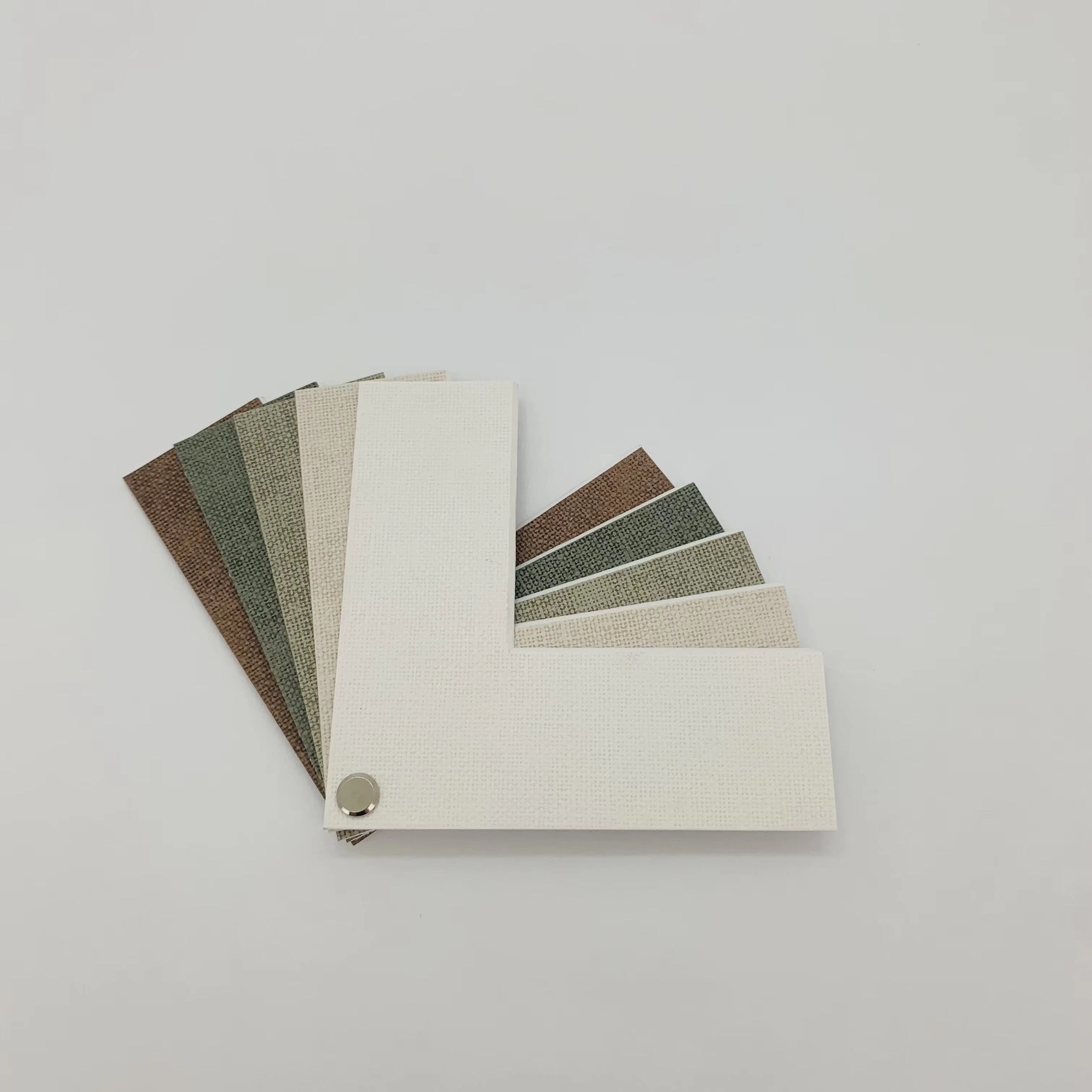The Essential Role of Mat Boards in Art Framing
Defining Mat Boards: More Than Just a Border
Mat boards are really important for art framing and do much more than just look nice around the edges. These thick barriers are usually made from stuff like pressed wood pulp or cotton rag material, and they keep artwork away from touching glass or acrylic surfaces directly. The main reason this matters is because it stops damage from moisture and all sorts of environmental issues. Take what happens when moisture gets into a frame for instance. A good mat board keeps the artwork from sticking to the glass, so nothing gets ruined over time. But there's another side to mat boards too. They actually make framed artwork look better visually. The space between the art and the edge helps draw attention right where it should go, giving everything that finished professional appearance people want. So basically, mat boards protect against damage while also making things look great, which explains why they're pretty much essential for anyone serious about framing art properly.
Primary Functions: Protection vs. Presentation
Mat boards do two main things when it comes to framing artwork: they protect and present. These boards help keep artwork safe from damage by blocking out harmful UV light and creating a barrier between the frame and the actual piece. The protection aspect really matters because it helps artwork last longer while keeping colors vibrant and surfaces clean. On the other hand, mats also play a big part in how a piece looks on display. A good mat adds dimension to the composition and frames the artwork properly with a clean border around it. This makes the whole thing look better and focuses viewers' attention exactly where it should be. According to many professionals in the framing business, mats aren't just about protection anymore. They've become almost like design elements themselves, capable of transforming how an artwork appears in a gallery or home setting. That's why so many framers spend extra time choosing the right mat board for each individual piece.
Protective Functions of Mat Boards in Art Conservation
Preventing Moisture Damage and Glass Adhesion
Mat boards are really important for keeping art safe from moisture damage. These boards act as a shield against humidity that would otherwise ruin artwork over time. If there's no good mat board in place, moisture finds ways to sneak through and causes all sorts of problems like mold growing on the surface or colors fading and changing. Another thing these mats do is stop the artwork from sticking to the glass frame. Sometimes when people pick out the wrong kind of matting material, the glass actually reacts chemically with the art piece after sitting together for too long. This leads to artworks getting stuck permanently or even damaged beyond repair. So picking the correct type of mat isn't just about looks it makes sense practically too for protecting valuable creations.
Acid-Free vs. Decorative: Choosing the Right Material
Choosing between acid-free and decorative mat boards is critical in art conservation work. Acid-free mats, also known as conservation or archival boards, don't have those harmful acids that slowly eat away at artwork over years. Museums and galleries really stress this point because for expensive paintings or rare documents, these boards cut down on yellowing and deterioration risks dramatically. Decorative mats look great framed around artworks but many actually do contain acidic elements that could shorten how long the piece stays intact. Most framers will tell anyone serious about preserving their collection to go with acid-free options first and foremost.
Long-Term Preservation for Valuable Artwork
Good quality mat boards really matter when it comes to keeping valuable artwork safe for years to come. Art pieces that get properly matted tend to last much longer than ones left unprotected in frames. Take cotton rag archival mats for example these are super durable and won't break down like cheaper alternatives. They stop paintings and prints from drooping or getting wrinkled as they age, so the artwork keeps looking great. When framers choose the right materials, museums and collectors know their investments will stay colorful and undamaged for decades. That means future art lovers can still enjoy masterpieces just as much as we do today.
Enhancing Aesthetics Through Strategic Mat Board Selection
Creating Visual Depth with Layered Borders
When artists want their work to stand out, layered borders made from several mat boards really help add depth and visual interest to frames. Framers who stack various mats together create something special, almost like a three dimensional effect that grabs people when they look at the piece. Most framers start with a dark mat board underneath because it makes the lighter mat on top pop against it, creating contrast that helps the actual artwork become the star of the show. Some also put those little angled edges on each mat layer, which actually makes the layers look separated even though they're right next to each other. These kinds of tricks are pretty common among experienced framers who turn basic frames into something much more eye catching. The way mats are layered can completely change how a piece looks, sometimes making all the difference between good and great presentation.
Color Coordination and Contrast Techniques
Getting the right color balance when choosing mat boards really makes framed art stand out visually. When someone applies basic color theory concepts, they pick mat colors that either go well with or stand out against the piece itself, making it pop more. Take complementary colors for example these are colors across from each other on the color wheel like blue and orange. Using them creates something eye catching and lively around the frame. On the flip side, analogous colors sit next to each other on the wheel red, orange, yellow for instance and give off a calmer vibe that feels put together. Knowing how to work with both approaches draws attention to what matters most in the artwork while also making the whole frame look better overall.
Texture Choices: From Linen to Suede Finishes
Mat board textures really make a difference when it comes to how art looks and feels. People actually experience artwork differently based on what they touch and see around it. There are all sorts of options out there, from the rough hand of linen to the smoothness of suede. Linen mats give off this understated elegance that works wonders for older pieces or anything with a traditional vibe. Suede mats? They're like wrapping your art in something soft and warm, creating that feeling of luxury without being too showy. The way different textures handle light is pretty interesting too. Rougher surfaces tend to spread light around instead of reflecting it straight back, which means less glare and better visibility of the actual art. When choosing a mat board, think about what kind of atmosphere you want to create. A good match between texture and artwork can transform how people perceive and connect with the piece over time.
Directing Focus and Creating Space with Mat Boards
Using Negative Space to Highlight Artwork
Negative space plays a big role in how we frame art, helping viewers see what matters most. Think of it as all the empty areas surrounding whatever's actually in the picture. These gaps give things room to breathe so the main part stands out clearly. Good framers know exactly where to leave these spaces so certain details pop right at you when looking at their work. Take minimalist pieces for example they tend to have lots of open space around them which guides our eyes straight to whatever artist wanted us to notice first. Most experienced professionals understand that proper use of negative space helps everything look balanced while still letting the actual art take center stage without getting lost among too many other distracting elements.
Accommodating Signatures and Annotations
Leaving space on mat boards for signatures or notes really matters when it comes to making art feel personal and boosting its worth. When there's room for those kinds of additions, pieces stand out more and people start seeing them as something special rather than just another item. We often notice this in works with historical connections or where artists leave behind their thoughts. Take vintage photos or gallery pieces for instance they usually have plenty of breathing room around edges specifically for such purposes. Good matting actually adds real value too. Many collectors pay extra attention to whether an artist signed their work right there on the board itself. That small detail makes all the difference in how authentic the piece feels and what kind of price tag it might eventually carry at auction.
Balancing Proportions for Different Art Sizes
The way we balance mat board proportions based on different artwork sizes really changes how people see and feel about the art. When framers get the proportions right, they create visual balance that makes everything look harmonious together. Big artworks usually need wider mats so they don't get lost but still stand out as something special. For smaller pieces, narrower mats work better because they highlight the artwork without making it seem too tiny. Good framers know all this stuff instinctively after years of practice. They make sure every framed piece grabs attention and keeps viewers interested. Getting the balance just right lets artwork blend naturally with whatever space it sits in, making it look better overall while also connecting with the environment around it.
When framers get a handle on key aspects like negative space, signature placement, and proportion balance, they craft displays that really bring out what makes art special. Good framing doesn't just make pieces look better visually it actually affects how much people value them over time. Art collectors know this well because proper presentation preserves the work's integrity while making sure signatures don't get lost in the frame. The right approach transforms ordinary artworks into something memorable, ensuring they stand out in galleries and private collections alike.
FAQ Section
What is the primary purpose of mat boards?
Mat boards serve two primary purposes: they protect artwork from environmental damage and enhance the aesthetic appeal of framed pieces.
Why are acid-free mat boards important?
Acid-free mat boards are important for preserving artwork as they do not contain harmful acids that can lead to yellowing and degradation over time.
How can I use color coordination in mat board selection?
By following color theory principles, color coordination can be achieved through choosing mat board colors that complement or contrast with the artwork to amplify its visual appeal.
What is float mounting?
Float mounting is a technique used to display textured or delicate artworks by raising them above the mat board to create depth without damaging fragile elements.

